Solar Heating in France
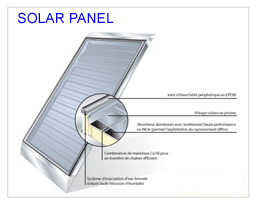
A guide to some alternative energy options
Why Solar?
Here in SW France we, on average, receive around 1400kwh/m²-a, i.e. 4kwh/m² per day of radiant energy from the sun. In fact, if mankind could only save it, half an hour of this energy that reaches the earth from the sun, would provide all that’s needed in the world for a whole year.
Flat Plate Solar Panels
Last summer I had the opportunity to talk to French solar energy installer who was staying with us in our B&B. He specialises in flat plate solar panels, so I explained my future project and asked how viable hot water solar energy would be for me.
For my future project (180m² of floor area), with two ensuite bedrooms, his reply was a double panel of 4,5m² would provide 60% of hot water needs; for heating as well I would need 9,0m², which would give 300ltrs of hot water and 40% heating per day. The rough estimate for the hot water only is 5000, made up of €3500 for materials and 1500 for labour; the 50% tax rebate on materials makes this viable. Obviously its easier to install a solar system into a new property or one being renovated, but it isn’t too much work to update an existing system, i.e. replace the hot water cylinder and fit new controls inside, then run the pipes out to the panel on the roof.
Here are a couple of web pages worth looking at.
www.aeer.fr for flat plate solar panels.
www.ademe.fr (agence de L’environnement et de la maîtrise de l’énergie)
Here you will find details of the regional rebates for all sorts of green installations and a list of registered installers. Lots of page links but its worth searching through.
Vacuum Tube Solar Panels
The new vacuum tube panels now on the market are far superior to the flat plate panels discussed above, in that they give a more efficient output in the winter. The suppliers quote 80%, and for photo volt panels 7 to 15%, with the costs at 30p a watt and £6 a watt respectively.
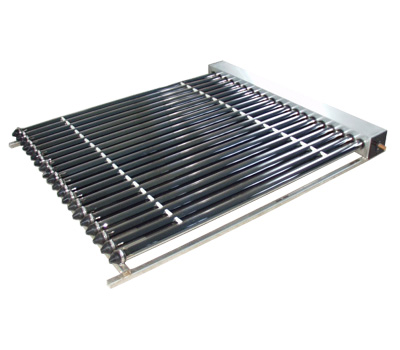
The Chinese invented this type of solar panel about ten years ago and now there are many firms marketing them throughout the world, some at ridiculous prices. They consist of a stainless steel frame supporting, at the top, an insulated manifold for the water, into which slot the tubes – they are just like long vacuum flasks 1500mm long by 47mm dia. made from a Pyrex like glass.
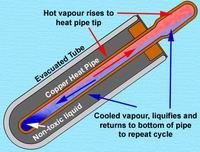 Down the centre of each tube is a copper rod that terminates in a nipple which slots into the manifold, thus conducting heat to the water. These rods become very hot (up to 250c) even in winter, in fact they give hot water in the Antarctic with the ambient air temperature at –40c.
Down the centre of each tube is a copper rod that terminates in a nipple which slots into the manifold, thus conducting heat to the water. These rods become very hot (up to 250c) even in winter, in fact they give hot water in the Antarctic with the ambient air temperature at –40c.
These panels come in 10, 20 and 30 tube sizes and can be coupled up together to give higher output, i.e. for heating and hot water. A 20 tube panel (2.25m²) here in SW France will be sufficient for hot water (60c) for a house of 3/4 people, the quoted cost being £395 for the panel, to which must be added the controls, pump and a dedicated hot water cylinder
Here are some websites to visit.
www.navitron.org.uk This site is all about eco friendly products from wood burning stoves to water generating turbines and he asks how firms can advertise as being eco friendly and then charge inflated prices for their products. He is setting up a distributor network in the EEC for his products. Well worth a visit.
Hot Water Storage and Controls
So, now that we’ve all looked at the various types of solar panels available, we need to think of how we are going to store the energy gained from them, and what controls are available to get the best out of it.
The hot water storage cylinder comes in many different guises, the basic being a direct gravity feed cylinder, with its header tank and then comes the indirect gravity feed, as above but the boiler circuit is separate from the hot water. Nearly all of us from the UK will be familiar with the last. Then we have the mains pressure cylinder, which is the norm in France and Europe – these are now being introduced into the UK.
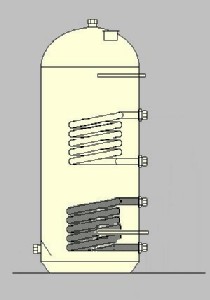 Any of these can be adapted for solar panels. In the first you could take out the immersion heater and fit a heating coil from the solar panel. This isn’t very efficient and you loose the electric heater back up. The next is to go direct into the usual blanks on a direct cylinder, but in hard water areas you will get furring up of the solar panel because new water will be introduced each time you run a hot tap. The easiest and possibly cheapest is to branch into the secondary circuit of an indirect cylinder (if fitted) – with the right controls this will work very well.
Any of these can be adapted for solar panels. In the first you could take out the immersion heater and fit a heating coil from the solar panel. This isn’t very efficient and you loose the electric heater back up. The next is to go direct into the usual blanks on a direct cylinder, but in hard water areas you will get furring up of the solar panel because new water will be introduced each time you run a hot tap. The easiest and possibly cheapest is to branch into the secondary circuit of an indirect cylinder (if fitted) – with the right controls this will work very well.
Here in France most people have a mains pressure electric balloon for hot water. Drilling the bottom immersion heater plate and fitting a coil can adapt this to solar, but it’s not for the do- it- yourselfer and I don’t think that a French plumber would do it. Most plumber/ heating engineers will fit an indirect mains pressure cylinder with heating coils to match the system in use.
In nearly all installations the solar circuit will be pressurised, this is necessary for vacuum tube systems as it allows for the much the higher water temperatures without the risk of the water boiling, cylinder water temperatures can reach 90c, its also safer to fill with an antifreeze fluid. A mixer valve on the hot water outlet saves energy and guards against scolding.
A further alternative is the thermal store, a specialised hot water cylinder (200/300ltrs) which will have up to five heat exchange coils inside depending on the sophistication of the heating system, this is just used as a heat store for various heating methods, either input or out take. Starting at the bottom and going up to the top the heat exchanger coils will be as follows;
1st—solar panel in
2nd—-geothermal in
3rd— conventional boiler in (gas, oil, solid fuel, wood)
4th—central heating out
5th— mains pressure heat exchanger out (for the hot taps)
This cylinder will normally be open vented.
Whichever combination of solar panel/cylinder used its very important to install a control system to make the whole thing work economically.
This will consist of proper temperature sensors both at the panel and cylinder end (normal thermostats are not sensitive enough) an air purge at the highest point, an expansion vessel with pressure gauge, the pump and the control box itself which can show panel and cylinder temperatures.
Share to: Facebook Twitter LinkedIn Email
More in centre, estate agents, guides, heating, summer, tax, work
Leave a reply
Your email address will not be published. Required fields are marked *

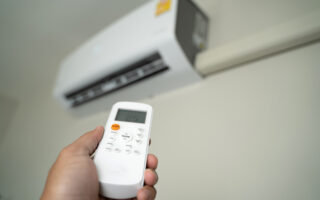

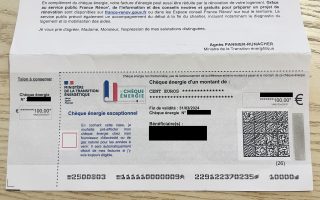
REPLY